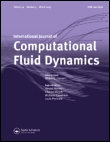
INTERNATIONAL JOURNAL OF COMPUTATIONAL FLUID DYNAMICS
Scope & Guideline
Exploring Innovative Solutions in Computational Fluid Dynamics
Introduction
Aims and Scopes
- Numerical Methods Development:
The journal is committed to the development of advanced numerical methods, including high-order schemes, adaptive mesh refinement, and new discretization techniques, to enhance the accuracy and efficiency of fluid dynamics simulations. - Applications in Aerospace and Engineering:
It seeks to publish works that apply CFD methods to real-world engineering problems, particularly in aerospace, mechanical engineering, and environmental studies, showcasing the practical impact of computational techniques. - Multiphase and Complex Flows:
Research focusing on multiphase flow dynamics, including interactions of different phases and complex geometries, is a significant area of interest, reflecting the journal's commitment to addressing challenging fluid dynamics problems. - Integration of Machine Learning:
The journal highlights the integration of machine learning and artificial intelligence with traditional CFD methods, aiming to improve predictive capabilities and optimize simulations. - Uncertainty Quantification and Sensitivity Analysis:
A focus on uncertainty quantification techniques in CFD, exploring how variations in input parameters affect simulation outcomes, is also central to the journal's scope.
Trending and Emerging
- High-Order Numerical Methods:
There is a significant trend towards the development and application of high-order numerical methods, which improve the accuracy and convergence rates of CFD simulations, particularly in complex flow scenarios. - Machine Learning Integration:
The integration of machine learning techniques into CFD is rapidly emerging, with studies exploring how AI can enhance modeling, reduce computational costs, and improve predictive accuracy. - Hypersonic Flow Simulations:
Research on hypersonic flows is gaining prominence due to its relevance in aerospace applications, reflecting a growing interest in accurately modeling extreme flow conditions. - Multiphase Flow Dynamics:
The exploration of multiphase flows, particularly in industrial and environmental contexts, is increasingly highlighted, emphasizing the complexities and interactions between different phases. - Adaptive Mesh Techniques:
Emerging interest in adaptive mesh techniques is evident, focusing on dynamically refining mesh resolution based on flow features to enhance simulation accuracy without excessive computational cost.
Declining or Waning
- Basic Turbulence Models:
There has been a noticeable decline in publications focused on basic turbulence models, such as RANS (Reynolds-Averaged Navier-Stokes) equations, as researchers increasingly explore more sophisticated approaches like LES (Large Eddy Simulation) and DNS (Direct Numerical Simulation). - Low-Fidelity Approaches:
Low-fidelity modeling techniques are becoming less common, as the field moves towards high-fidelity simulations that offer more accurate representations of fluid flows, particularly in complex environments. - Conventional Finite Element Methods:
Traditional finite element methods are less frequently featured, with a growing emphasis on high-order methods and meshless techniques that provide improved accuracy and efficiency in simulations. - Static Geometrical Analysis:
Research centered on static or less dynamic geometrical analyses is waning, as the journal increasingly emphasizes dynamic and transient flow simulations that better reflect real-world applications. - Single-Phase Flow Studies:
There is a decline in studies focusing solely on single-phase flows, as the interest shifts towards more complex, multiphase interactions that are critical in industrial applications.
Similar Journals
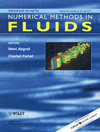
INTERNATIONAL JOURNAL FOR NUMERICAL METHODS IN FLUIDS
Exploring the Depths of Computational Fluid DynamicsINTERNATIONAL JOURNAL FOR NUMERICAL METHODS IN FLUIDS, published by Wiley, has established itself as a leading platform for cutting-edge research in the fields of applied mathematics, computational mechanics, computer science applications, and mechanical engineering. With its ISSN 0271-2091 and E-ISSN 1097-0363, this journal is committed to disseminating high-quality, peer-reviewed articles that contribute to the advancement of numerical methodologies in fluid dynamics. Boasting a commendable 2023 impact factor that places it in the second quartile across multiple relevant categories, it provides insights into significant research dimensions that engage an audience of researchers, professionals, and students keen on the computational challenges of fluid flow. The journal's broad scope encompasses foundational and applied research, encouraging the exploration of new numerical techniques and algorithms. As an invaluable resource based in the United Kingdom, INTERNATIONAL JOURNAL FOR NUMERICAL METHODS IN FLUIDS remains dedicated to providing insights and fostering innovation in its domain, with a consistent publication history spanning from 1981 to 2024.
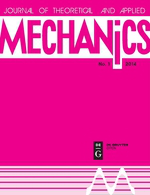
Journal of Theoretical and Applied Mechanics-Bulgaria
Exploring Innovations in Theoretical and Applied MechanicsThe Journal of Theoretical and Applied Mechanics-Bulgaria, with the ISSN 0861-6663 and E-ISSN 1314-8710, is a pivotal publication in the field of mechanics, published by the esteemed BULGARIAN ACAD SCIENCES, INST MECHANICS. Based in Germany, this journal serves as a forum for researchers and practitioners to disseminate groundbreaking theories and applications in Computational Mechanics, Mechanical Engineering, and Modeling and Simulation. As of 2023, it is classified in the Q4 quartile for these categories, reflecting its emergence in the academic landscape, though it has room for growth in visibility and impact. The journal encompasses an ambitious scope aimed at fostering innovation and collaboration among academics, making it an invaluable resource for students and professionals seeking to stay abreast of emerging trends and methodologies in mechanics. Despite its current rank and percentile indicators in Scopus, the journal is committed to enhancing its reach and impact within the community through future editions converging from 2016 to 2024. With no open access options currently available, it emphasizes the importance of institutional subscriptions and academic partnerships to maintain its quality publication standards.

Moscow University Mechanics Bulletin
Fostering Dialogue in Engineering DisciplinesMoscow University Mechanics Bulletin, published by PLEIADES PUBLISHING INC, is a dedicated journal that has been influencing the fields of mechanical engineering and mechanics since its inception. With an ISSN of 0027-1330 and E-ISSN of 1934-8452, this journal serves as a crucial platform for advancing knowledge in mathematics, mechanical engineering, and mechanics of materials. Though currently indexed in the Q4 category across these disciplines, it offers a unique space for researchers and professionals to engage with emerging theories, experimental results, and practical applications. With a converged publication history spanning from 1973 to 1987, and continuing from 2007 to 2024, the journal remains relevant in today’s academic landscape. Though it operates under traditional access models, the journal's global reach aims to connect diverse voices in engineering research. Aspiring researchers and seasoned professionals alike will find valuable insights and a robust discourse that contribute to their respective fields.
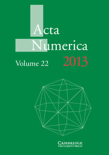
ACTA NUMERICA
Pioneering Research in Numerical Methodologies.ACTA NUMERICA, published by Cambridge University Press, stands as a premier journal in the fields of Mathematics and Numerical Analysis since its inception in 1992. With an impressive Scopus ranking that places it in the 99th percentile and a prestigious Q1 category status in both Mathematics (miscellaneous) and Numerical Analysis for 2023, it has established itself as a leading platform for cutting-edge research. The journal's scope encompasses a wide range of numerical methods and computational techniques that address complex mathematical problems, making it an essential resource for researchers, professionals, and students alike. Although it does not provide Open Access, its commitment to quality and innovation in the mathematical sciences continues to attract submissions from around the globe. Published in the United Kingdom, ACTA NUMERICA remains a vital channel for disseminating significant advancements in numerical methodologies.

Journal of Nanofluids
Unleashing Potential: The Science of NanofluidsJournal of Nanofluids, published by AMER SCIENTIFIC PUBLISHERS, is a leading international journal dedicated to the burgeoning field of nanofluid technology which bridges the areas of fluid dynamics and nanotechnology. With an ISSN of 2169-432X and E-ISSN of 2169-4338, this journal has established itself as a valuable resource for researchers and professionals in Mechanical Engineering and Chemical Engineering, particularly in the domains of fluid flow and transfer processes. Its prestigious standing is reflected in the 2023 Scopus rankings, positioning it in the 79th percentile for Mechanical Engineering and the 78th percentile for Fluid Flow and Transfer Processes. Although coverage has been discontinued in Scopus since 2021, the journal maintains a Q2 category ranking in both relevant fields, emphasizing its commitment to high-quality and impactful research dissemination. This journal aims to foster innovation and collaboration among scientists and engineers worldwide, providing a platform for groundbreaking research, reviews, and discussions on nanofluids, their properties, and applications. As an essential addition to the library of any researcher or student vested in advanced fluid dynamics, the Journal of Nanofluids serves as a pivotal conduit for advancing knowledge and technology in this exciting and evolving field.

JOURNAL OF SCIENTIFIC COMPUTING
Pioneering Research in Computational ExcellenceJOURNAL OF SCIENTIFIC COMPUTING, published by Springer/Plenum Publishers, stands as a premier venue for disseminating innovative research in the domains of applied mathematics, computational mathematics, and numerical analysis, among others. With an illustrious history spanning from 1986 to 2024, this journal has established itself as a vital resource for scholars and practitioners, reflected in its Q1 status in multiple categories including Applied Mathematics and Software, as per the 2023 rankings. The journal features a rigorous peer-review process, ensuring high-quality publications that contribute to the advancement of theoretical and practical knowledge in scientific computing. Although not open access, the journal provides critical insights and methodologies that are invaluable for advancing computational techniques in engineering and mathematics. With impressive Scopus rankings, including being in the 78th percentile for Numerical Analysis, JOURNAL OF SCIENTIFIC COMPUTING is essential reading for researchers, professionals, and students aiming to stay at the forefront of scientific innovation.
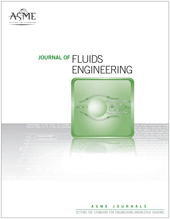
JOURNAL OF FLUIDS ENGINEERING-TRANSACTIONS OF THE ASME
Exploring the Depths of Fluid DynamicsJOURNAL OF FLUIDS ENGINEERING-TRANSACTIONS OF THE ASME, published by the renowned American Society of Mechanical Engineers (ASME), stands as a pivotal platform for disseminating cutting-edge research in the field of mechanical engineering, specifically focusing on fluid mechanics and its diverse applications. With an established history dating back to 1897, this journal features research that pushes the boundaries of knowledge and technology in areas such as fluid dynamics, thermal engineering, and hydrodynamics. Although it is not an open-access journal, it maintains rigorous peer-review standards, ensuring the publication of high-quality scholarly articles that contribute to the academic and professional community. In the latest rankings, it holds a respectable position within the Q2 category of mechanical engineering journals, reflecting its significant impact, as evidenced by its Scopus rank of #204 out of 672, placing it in the 69th percentile. Researchers, professionals, and students alike will find this journal to be a vital resource for the latest developments and innovative insights in fluids engineering.

Journal of Mathematical Fluid Mechanics
Unraveling the Complexities of Fluid Motion Through Mathematical InsightThe Journal of Mathematical Fluid Mechanics, published by SPRINGER BASEL AG, is a prestigious academic journal dedicated to the study of fluid dynamics through the lens of mathematics. With its ISSN 1422-6928 and E-ISSN 1422-6952, this journal has firmly established itself in the academic community since its inception in 2004, converging knowledge across various mathematical disciplines until 2024. Recognized in the top Q1 quartile rankings for Applied Mathematics, Computational Mathematics, Condensed Matter Physics, and Mathematical Physics as of 2023, it reflects a strong commitment to high-quality research and innovation. The journal features a variety of research articles, reviews, and theoretical frameworks, serving as an essential resource for researchers, professionals, and students eager to explore the mathematical principles underlying fluid mechanics. While it does not offer open access, the impact of its contributions resonates within interdisciplinary fields, advancing both theoretical insights and practical applications.

MECCANICA
Exploring the Frontiers of Condensed Matter and MechanicsMECCANICA, an esteemed journal published by Springer, stands at the forefront of research in the fields of Condensed Matter Physics, Mechanical Engineering, and Mechanics of Materials. Established in 1966 and continuing through 2024, this journal provides a robust platform for the dissemination of innovative research and advancements in these increasingly interconnected domains. With an impressive 2023 ranking placing it in the Q2 category across multiple fields, MECCANICA boasts a Scopus rank of #198 in Mechanical Engineering, #150 in Condensed Matter Physics, and #141 in Mechanics of Materials, highlighting its significance and influence within the scholarly community. The journal aims to foster dialogue among researchers, professionals, and students, facilitating the exchange of cutting-edge ideas and methodologies crucial for overcoming contemporary engineering and physics challenges. Readers can access a wealth of knowledge through its comprehensive articles, and while it does not currently offer open access, the journal remains instrumental in shaping the future of engineering and physical sciences.
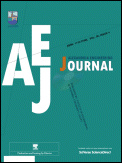
Alexandria Engineering Journal
Shaping the future of engineering with cutting-edge insights.Alexandria Engineering Journal is a premier open access publication dedicated to advancing the field of engineering. Published by ELSEVIER and headquartered in Amsterdam, the Netherlands, this journal has been at the forefront of disseminating innovative research since its inception in the year 2000. With its impressive Q1 ranking within the Engineering (miscellaneous) category and a notable position as #20 out of 307 in the Scopus rankings, it serves as a vital resource for scholars and practitioners alike, ensuring that cutting-edge findings reach a global audience. The journal is accessible to all since adopting open access policies in 2010, thereby facilitating the sharing of valuable insights without barriers. As we approach the convergence of years from 2000 to 2024, the Alexandria Engineering Journal continues to play a pivotal role in shaping engineering practices and underpinning significant advancements in the field.